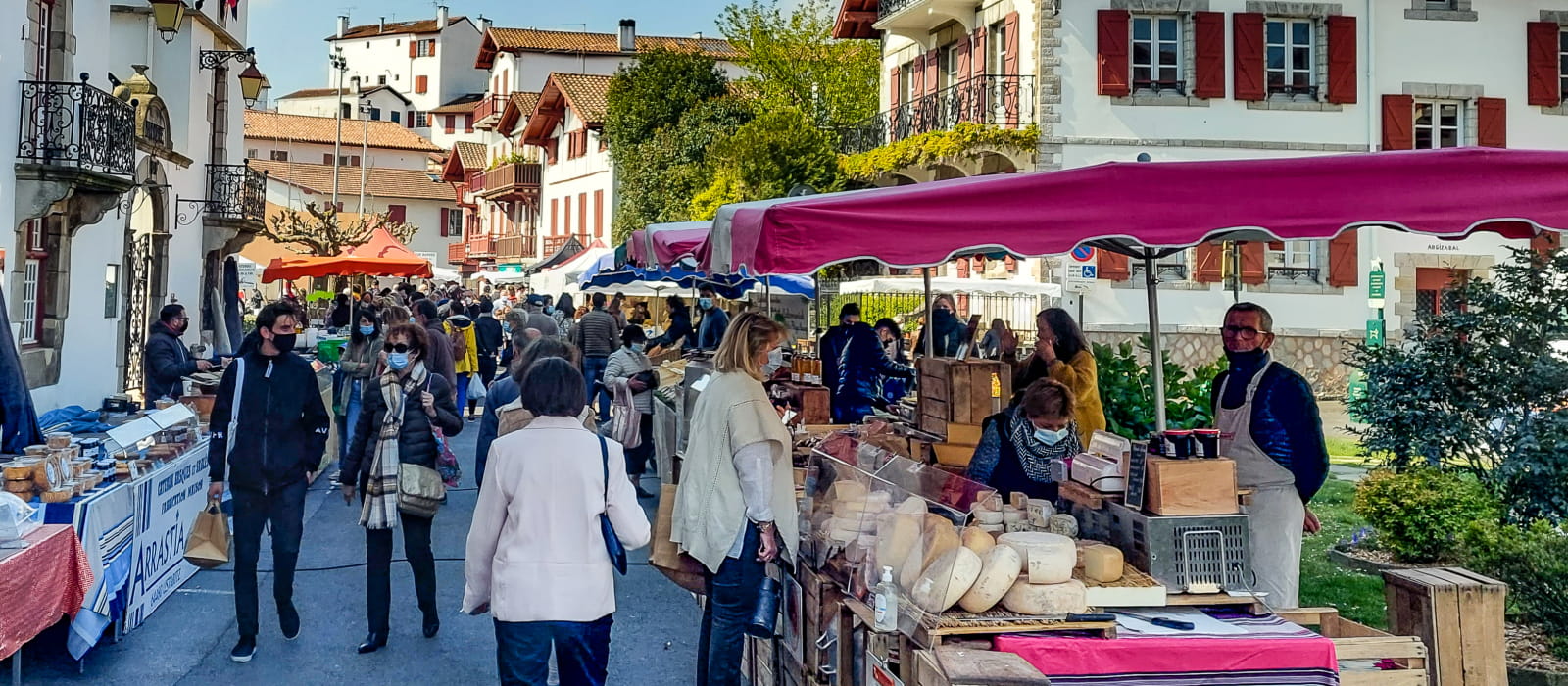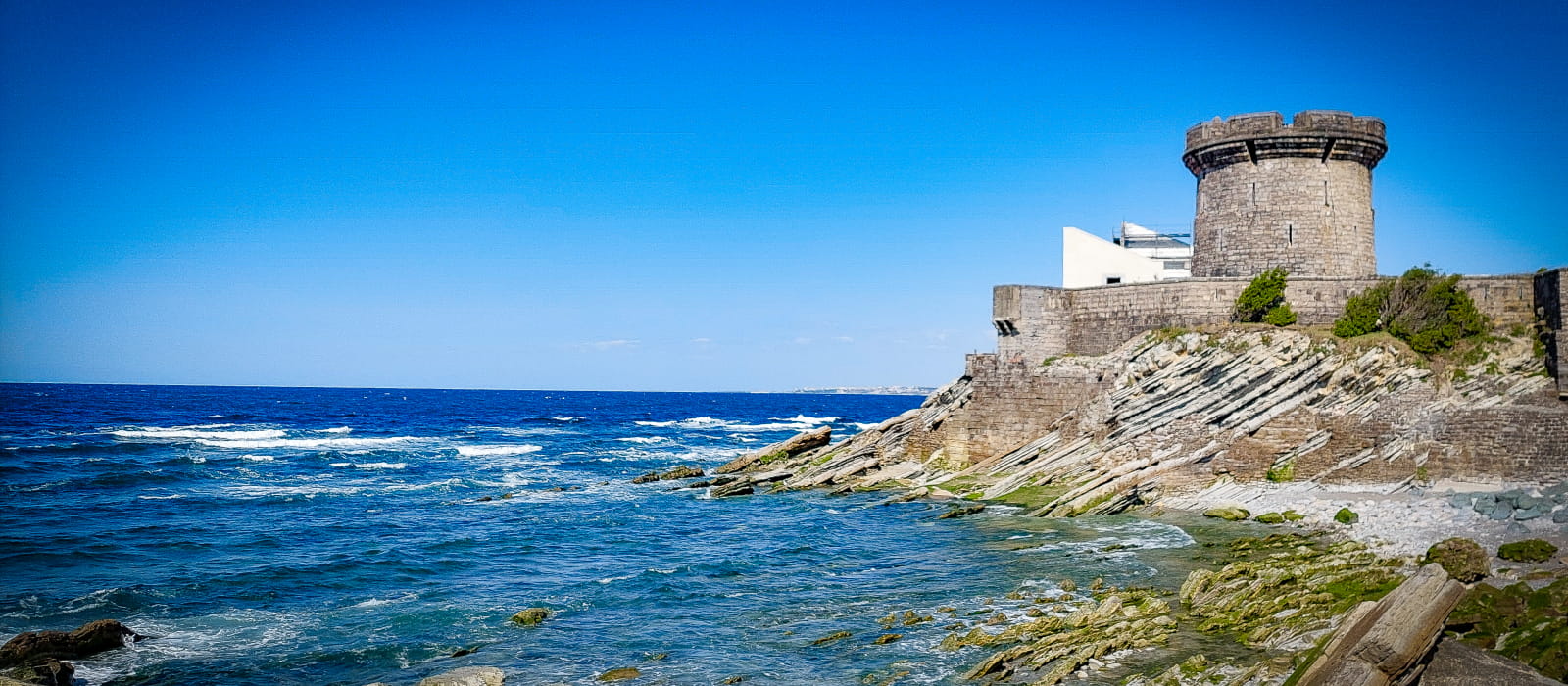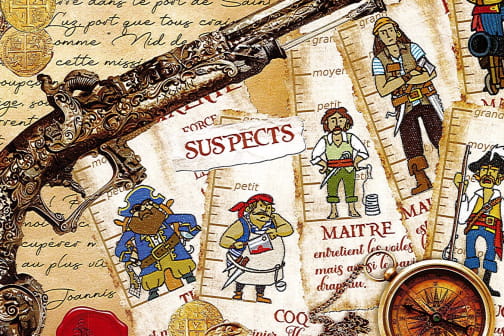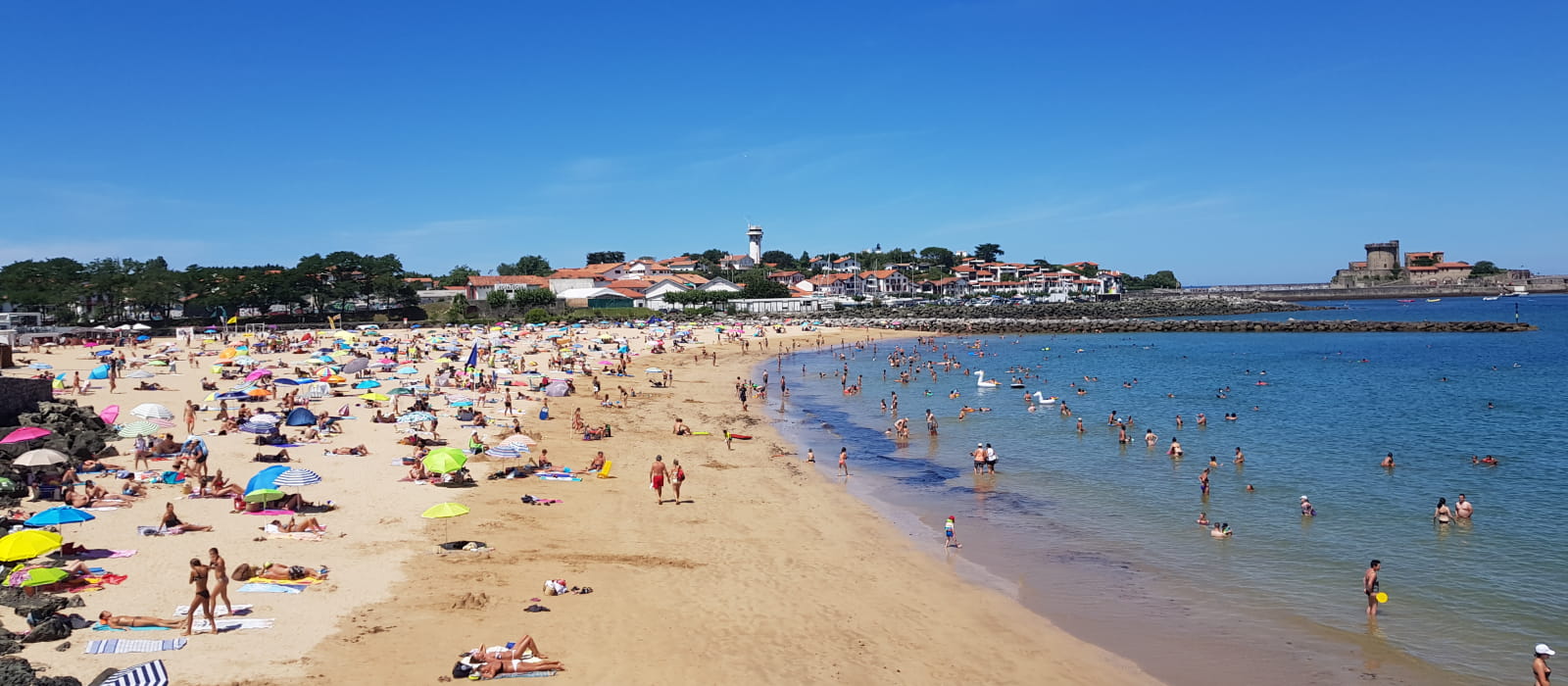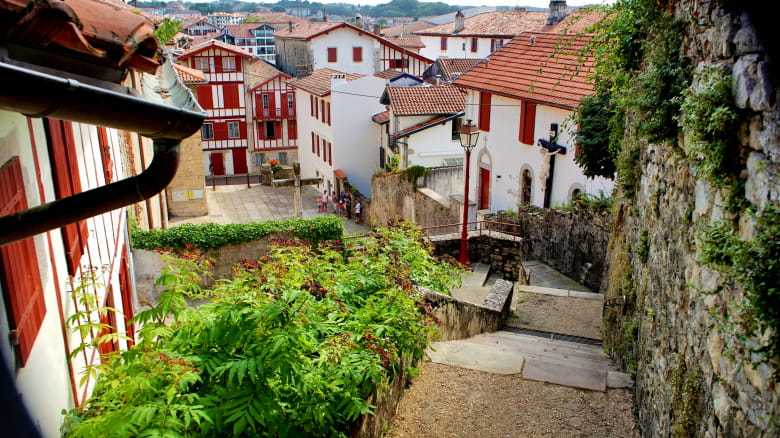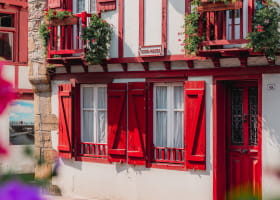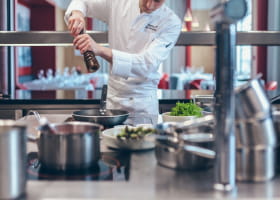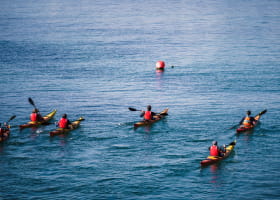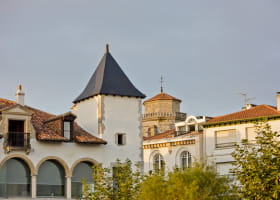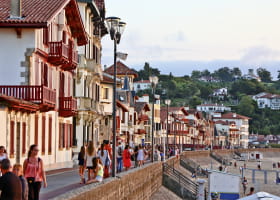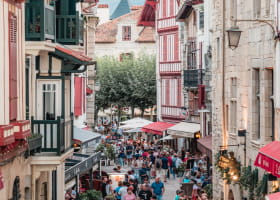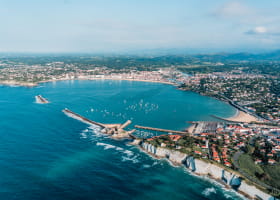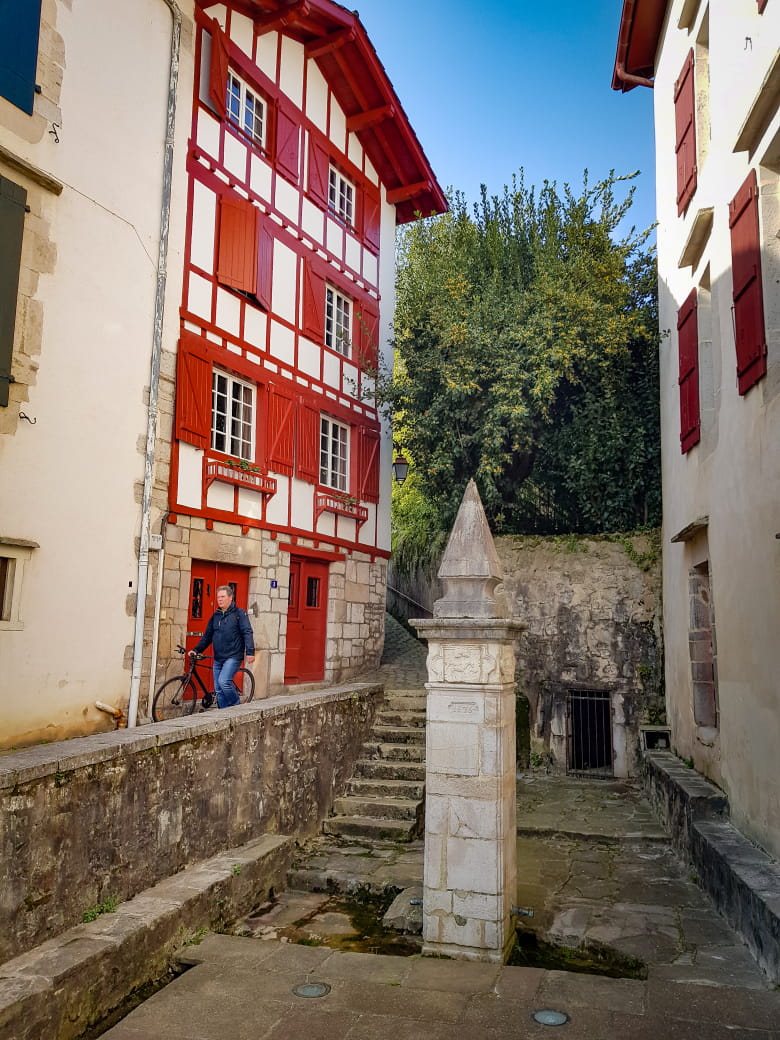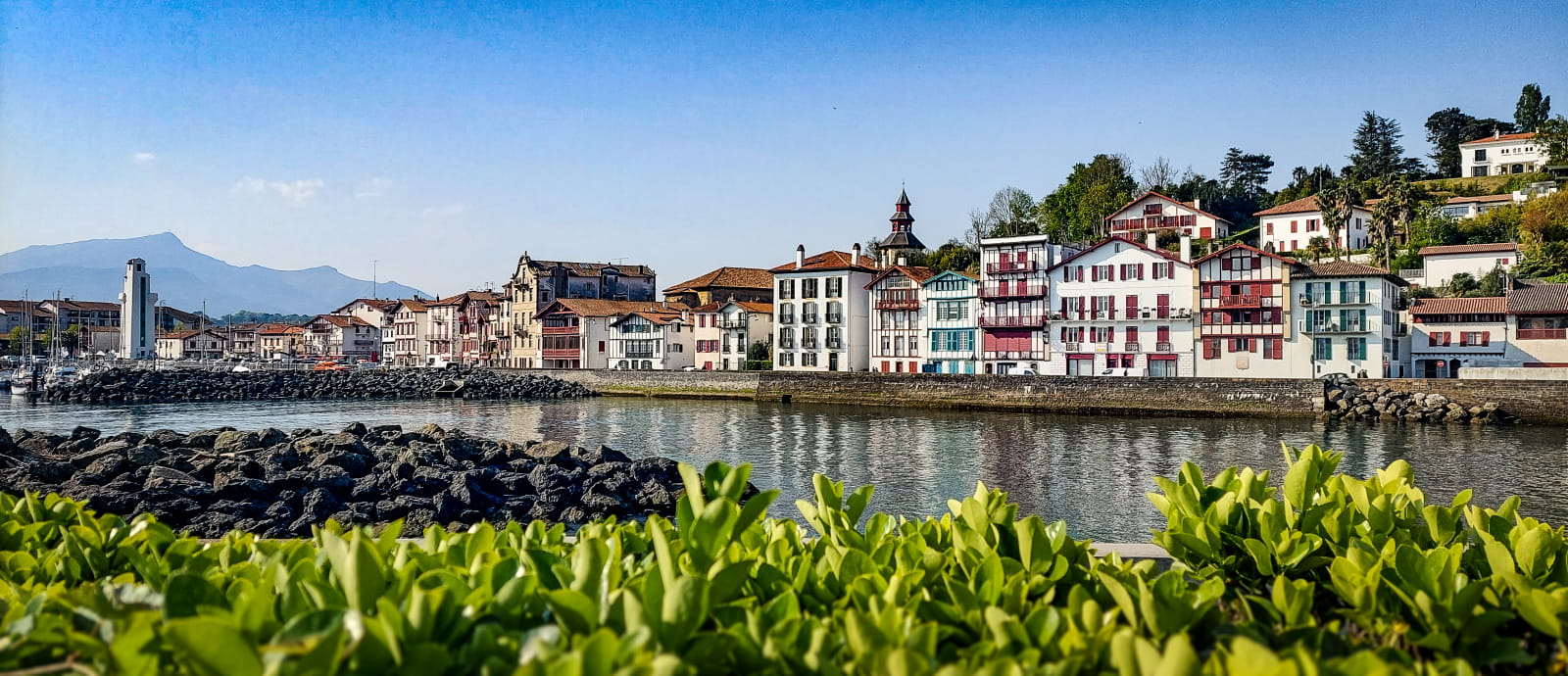
Ciboure
Ziburu
Nestled in the hollow of the bay, on the left bank of the River Nivelle, this seaside village faces the neighbouring town of Saint-Jean-de-Luz. At the other end of the bridge that it was named after in the Basque language Zubiburu, which became Ziburu, meaning "bridgehead", Ciboure has managed to preserve its authenticity and its attachment to marine environments.
Discovering Ciboure is like diving into the past when strolling through its narrow streets in the historic centre, sharing its connection with the ocean, and getting a glance at traditions so dear to its inhabitants...
Not to be missed in Ciboure
Agenda
Animazioak
Ciboure and the ocean
Itsas
Over the centuries, the history of Ciboure has been closely linked to the sea and its activities. The Labourdine-style houses on Quai Ravel have witnessed the development of the fishing industry and its evolution. Although fishing is no longer the main economic activity, the harbour remains active with a fleet of around forty boats. Yachting provides an additional maritime activity with the Larraldenia marina built in the 1970s. .
The fishing harbour
- The history of fishing
From the 15th century to the beginning of the 18th, whaling and cod fishing in Newfoundland developed the reputation of the fishing harbour and attracted a lot of people around the bay. After several decades of decline, it was not until the beginning of the 20th century that the harbour experienced a "renaissance" with, in particular, sardine fishing, and the port went on to become France's leading sardine fishing harbour in 1947 and 1966. New fishing techniques appeared and in 1951, the harbour became the leading tuna fishing harbour in France. A whole economy developed around this fish, with the first tuna fishing operations starting in Dakar in 1956 and even today fishermen from Ciboure and St Jean de Luz can be found in Senegal.
- Fish factories
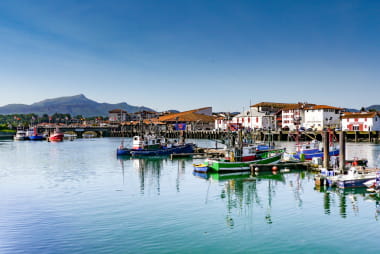
From 1930 to 1945, the harbour underwent constant development. Fish canneries started to develop in the towns of Ciboure and Saint Jean de Luz in 1914 and in 1954 there were no fewer than 19 canneries.
In that half of the 20th century, it was necessary to call on specialised cannery labour, which led to the massive arrival in Ciboure of men and women from Brittany. They bonded with local families and most of them settled in the Basque Country.
The last factory in Ciboure closed its doors in 1992.
- Fishing today

The port now has around forty fishing boats using different fishing techniques. There are sardine fishing boats, trawlers, tuna fishing boats... including the Airosa, a boat built in 1953 which symbolizes the Basque maritime heritage, classified as a historical heritage boat, and still in operation. You can go out for a day’s fishing as a guest on board the Ordagna, approved by pesca-tourism authorities.
The fish market has been in Ciboure since 1997 and boats can unload their catch every day of the week, 24 hours a day. The fish auction takes place every day of the week at 6 a.m. in Ciboure and is exclusively reserved for professionals. Having said that, anyone can come and buy their fresh fish at the hut on the port, which sells the fishermen’s catch of the day.
A new activity has developed over the past few years: following on from the summer’s fishing activities,18 boats are equipped in September to gather red seaweed, gelidium, which is used to produce agar-agar.
Today, the fishing sector generates more than 600 jobs.
Beaches in Ciboure
The Estropadak and Batteleku races
You can discover traditions from the past with revamped boats during the Estropadak, trainière boat races, or battelekus races.
Today, the trainière is a fishing boat that has been converted into a recreational sports boat with 13 rowers and a helmsman, the true orchestrator who sees to it that the oars work in unison. The Estropadak regattas take place from June to September, mainly in Hegoalde (the Southern Basque Country), and attract tens of thousands of spectators, especially in the La Concha Bay in San Sebastian. A top-notch sports team has been formed in the Labourd region to participate in these regattas.
The batteleku is a small 5-6 metre boat with 2 rowers and a helmsman. As a small fishing boat, its use was revamped in 1992 by 4 friends who travelled to different ports in Hegoalde on board a batteleku named Teink. Since 1993, the Ur Ikara association has been organizing the Teink Trophy, a regatta with around twenty battelekus from Castro (near Bilbao) to Saint Jean de Luz.
A stroll along the sea front

Ciboure shares its bay with Saint-Jean-de-Luz and from the Larraldenia marina a promenade runs along the water's edge to Socoa. Whether you are on foot or cycling, the Vélodyssée enables you to go around the bay and discover the beautiful red and green painted facades of the Labourdine-style houses on Quai Ravel. A small esplanade near the statue of the virgin of Muskoa, protector of sailors and fishermen, provides a wide view of the bay and its protective groynes
Once you reach Socoa Beach, you can cross the Untxin River and continue your journey to the iconic fort, or go left along the river and discover the Untxin district.
An authentic Basque village on the sea
The historic centre with its narrow streets
A typical Ciboure postcard represents the fishing harbour and marina lined with Labourdine-style houses in the colours of the Basque country. But to discover the hidden treasures of this city you should stroll down the adjacent streets.
At the bend of an alley punctuated by the colourful half-timbered traditional houses, you will come across a fountain in the shape of an obelisk. How many secrets must have been exchanged by the Kaskarot inhabitants who used to come to the fountain to fill their water jars!! Curiosity may lead you down a small cobbled street to discover a sumptuous Labourdine-style house which, if you are visiting between April and June, will be adorned with its most beautiful ornament... beautiful wisteria in bloom!
Strolling through the alleys will undoubtedly lead you to Saint Vincent church with its very special bell tower, and at this precise location, just opposite it, stands the back of a unique house, contrasting with other traditional houses, the house called "Ravel". With Dutch-inspired architecture, this 17th century shipowner’s house was where Cardinal Mazarin attended a wedding… then, some 200 years later, was the birthplace of famous composer Maurice Ravel.
The fronton (pelota wall)
In all the villages in the Basque Country there is the trilogy of Church, Town Hall and Fronton, normally not very far from each other, the fronton being a lively place where people play sport and mingle.
In Ciboure, the ocean connection may also be found on the fronton which sports the coat of arms of the city representing an oak tree, a horse and caravels. This open square, true witness to our traditions, is a location for pelota games, festivities, or simply becomes the children's playground.
Of course, as on all frontons, there are pelota games, pala or “bare hand”, and every year, on 15th August, the Laxoa Final, one of the oldest Basque pelota events, takes place there. But it is also the ideal place to bring our customs and traditions to life, especially at the end of winter with Sorgin Gaua and the Carnival parade with its procession of giants.
Gastronomy and conviviality are also part of fronton life. The Sunday market extends all along the street leading to the fronton, and on very specific occasions, a market with local producers and creators is set up in a veritable feast for our eyes and taste buds. It is also the favourite weekly meeting place for inhabitants of Ciboure on Thursday evening: the pintxo pote.
The Socoa district
Zokoaren auzogunea



